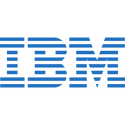Friday, December 22nd 2023

IBM Demonstrates a Nanosheet Transistor that Loves 77 Kelvin—Boiling Point of Nitrogen
IBM, at the 2023 IEEE International Electron Device Meeting (IEDM), demonstrated a concept nanosheet transistor that posts a near 100% performance improvement at the boiling point of nitrogen, of 77 Kelvin (-196 °C). Given how relatively industrialized and scaled out the manufacture, safe transport, storage, and use of liquid nitrogen is, this development potentially unlocks a new class of chips that attain top performance under liquid nitrogen cooling. Think a new generation of AI HPC accelerators that can instantly double their performance under LN2, provided a new kind of cooling solution is developed for data-centers.
Nanosheet transistors are the evolutionary next step to FinFETs, which have been driving semiconductor foundries since 16 nm, which could see their technical limits met at 3 nm. Nanosheets are expected to make their debut with 2 nm-class nodes such as the TSMC N2 and Intel 20A. At an operating temperature of 77 K, IBM's nanosheet device is claimed to offer a near doubling in performance, due to less charge carrier scattering, which results in lower power. Reducing scattering reduces resistance in the wires, letting electrons move through the device more quickly. Combined with lower power, devices can drive a higher current at a given voltage. Cooling also results in greater sensitivity between the device's on and off positions, so it takes lesser power to switch between the two states, resulting in lower power. This lower power means that transistor widths can be lowered, resulting in higher transistor densities, or smaller chips. As of now IBM is wrestling with a technical challenge concerning the transistor's threshold voltage, a voltage which is needed to create a conducting channel between the source and the drain.
Source:
IEEE Spectrum
Nanosheet transistors are the evolutionary next step to FinFETs, which have been driving semiconductor foundries since 16 nm, which could see their technical limits met at 3 nm. Nanosheets are expected to make their debut with 2 nm-class nodes such as the TSMC N2 and Intel 20A. At an operating temperature of 77 K, IBM's nanosheet device is claimed to offer a near doubling in performance, due to less charge carrier scattering, which results in lower power. Reducing scattering reduces resistance in the wires, letting electrons move through the device more quickly. Combined with lower power, devices can drive a higher current at a given voltage. Cooling also results in greater sensitivity between the device's on and off positions, so it takes lesser power to switch between the two states, resulting in lower power. This lower power means that transistor widths can be lowered, resulting in higher transistor densities, or smaller chips. As of now IBM is wrestling with a technical challenge concerning the transistor's threshold voltage, a voltage which is needed to create a conducting channel between the source and the drain.

26 Comments on IBM Demonstrates a Nanosheet Transistor that Loves 77 Kelvin—Boiling Point of Nitrogen
When people were really started to look around for different foundaries was around 2014/15.......Which meant you needed to actually break ground and commit to the build of a new foundary in 08/09 and we all know what happened in 08/09 with the economy. So you could imagine going up and proposing a multi billion dollar outlay at a time when the economy was in a complete meltdown with a prospective start of ROI being 5+ years down the line IF and only IF you managed to snag a good deal off Nvidia/Apple at that time.
However TSMC were completing a brand new "Gigafab" completing in 2009 which would stand them in great place for the recovery of the economy and the then stagnation of AMD/Global Foundaries fabs. AMD however was spinning off their Fabs at the same time and offloading them with over 1.5 billion dollars worth of debt while also agreeing to deal with those fabs for quite a few years after the spin off while having a product that wasnt anywhere near the equal of their Rival Intel.
EDIT/Contiunation:
So at this exact time you had Intel which still had a lead on foundry tech with 14nm being publically released around this time with the lower power Core M-5Y10 in late 2014.
Samsung had small chip in 14nm capability in early 2015 with larger chips coming in 2016 with Low end 1xxx series nVidia.
TSMC was primarily doing 28/22nm production with 16nm coming in 2015 with the Apple A9 in late 2015
Ryzen had barely hit tapeout stages and was still 2+ years away from public release.
IBM was on 22nm with their shift to 14nm coinciding with AMD at around 2017 with POWER9. This goes to show how behind Global Foundries had become after the 45nm parity with TSMC.